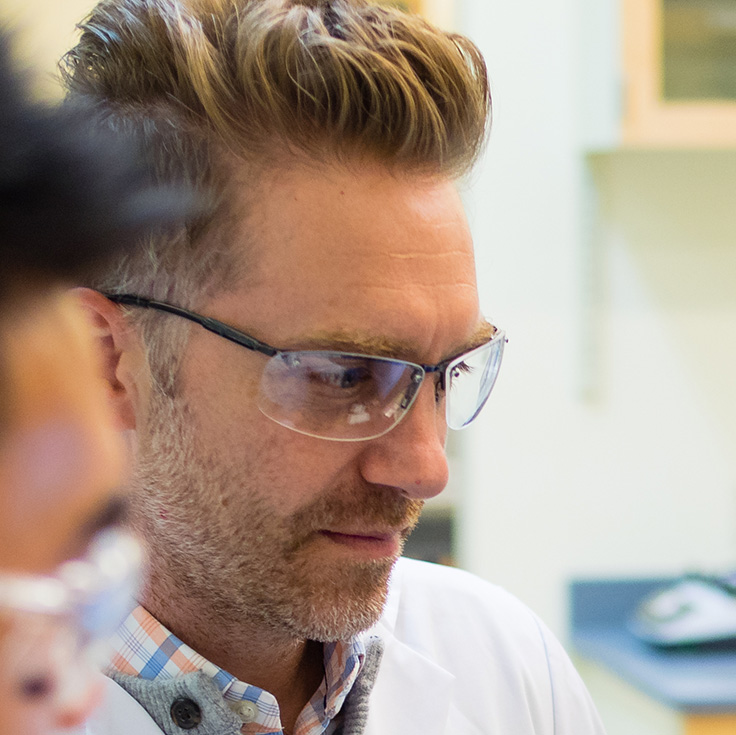The Bioimaging Facility (BIF), part of UBC Imaging Labs, has a team of technical staff with specialized expertise in operating the Hitachi H7600 Transmission Electron Microscope (TEM) and a wide variety of other imaging equipment to support industry and university researchers. Our team has helped our clients overcome challenges in their projects to get the images they need.
Read more about how the our clients have made breakthroughs in nanomaterials research by accessing the expertise of our staff.
Developing novel platforms for drug discovery

Therapeutic monoclonal antibodies are a relatively new class of drugs used to treat patients with serious illnesses. They have shown considerable efficacy in the treatment of a variety of diseases and generally carry fewer side effects than traditional drugs. Dr. Christopher Murawsky of Amgen Inc., a leading global biotech company, partnered with UBC’s Imaging Lab facilities to visualize and analyze engineered protein nanoparticles his lab had developed to aid in the discovery of novel therapeutic antibodies. By accessing the expert assistance and advice of UBC’s lab technicians and researchers, Dr. Murawsky was able to use a Transmission Electron Microscope (TEM) to verify that these nanoparticles had the desired characteristics his team was looking for. These results contributed to Amgen’s development of a potentially useful tool for the discovery of new antibody-based therapies.
Advancing renewable cellulose R&D

Cellulose nanocrystals are a high-strength, lightweight and resilient material extracted from trees that have a wide range of potential industrial applications. Dr. Wadood Hamad of FPInnovations partnered with UBC’s imaging lab facilities to visualize, investigate and exploit the remarkable properties of these tiny non-toxic, renewable particles. By accessing the expert assistance and advice of UBC’s lab technicians and researchers, Dr. Hamad was able to use a Transmission Electron Microscope to obtain results that show how these cellulose nanoparticles can improve the performance of nanocomposite materials in aerospace, automotive, marine and energy applications such as windmills.